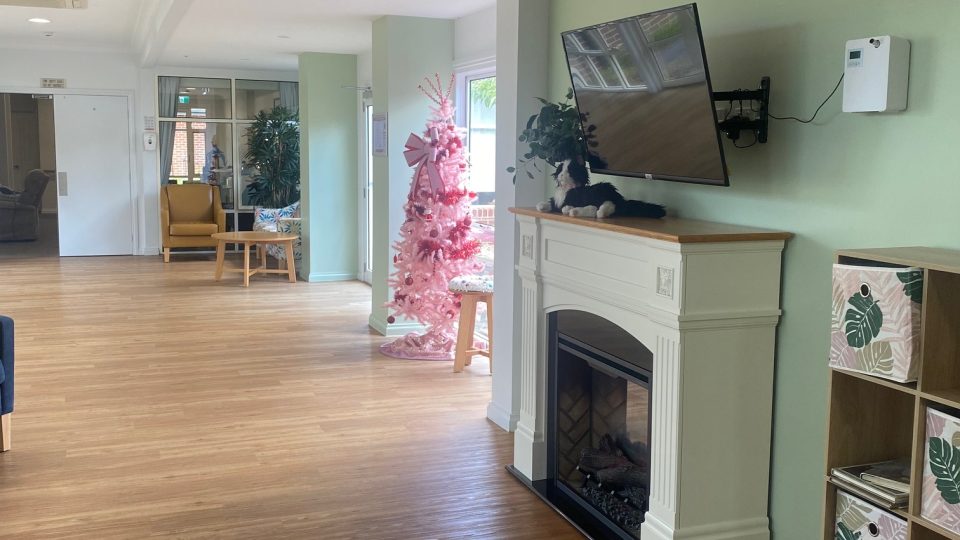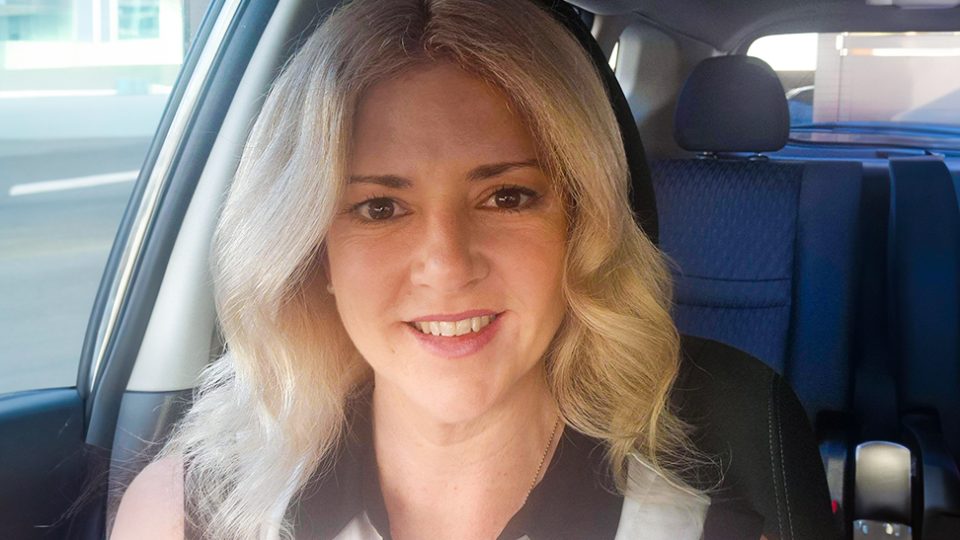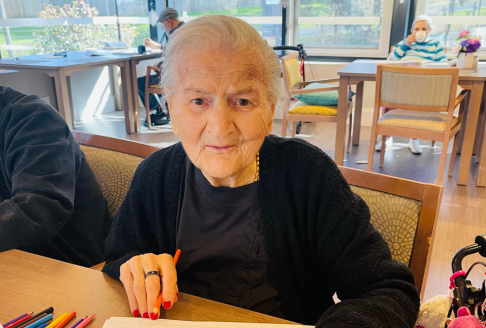Elpis Savidis is one of the most enthusiastic participants in Living Well Together, our Montessori-informed model of care at Baptcare Brookview Residential Aged Care community.
Staff find and create meaningful activities and purposeful roles that are aligned to Elpis’s experiences while catering to her current capabilities. She folds napkins in the dining room, as well as towels and clothes. She loves threading beads to create jewellery and making photo frames.
On Elpis’s Living My Best Life assessment, her daughter, Sophie, noted that Elpis had always been a sewer and a knitter. The Montessori approach is person-centred and holistic, so for Elpis, it means finding meaningful and enjoyable activities that relate to her pre-existing interests.

During her two years at Brookview, Elpis has often been upset and unsettled, with instances of physical and verbal aggression towards staff. This has decreased markedly since she started having access to the Living Well Together pilot program in July.
Elpis’s daughter has told staff that she hasn’t seen her mother so happy in a long time, and she attributes it to her engagement in meaningful activities through Living Well Together.
Sophie added that previously when she left after a visit Elpis would ask to go with her and become upset, but now their farewells are different, and Elpis is content to remain at Brookview.
“I have not seen my mother this happy for quite a while. Thank you, Baptcare, for introducing this special consumer-driven care model to maintain their quality of life and live the way they chose to live at home.”
“Elpis is a very active person,” said Brookview Living Well Together champion Subi Gurung. “She loves to be engaged. Staff notice that she never seems to get tired. She loves folding, so Living Well Together staff engage her in folding napkins in the dining room, towels and clothes.
“Other activities that she greatly enjoys include tidying of the dining and common areas, threading beds to make jewellery, and craft activities such as knitting and making photo frames. She also loves colouring in, and it has been noted that when Elpis is agitated, the colouring in activities help calm her.”
Baptcare is partnering with a team from Monash University’s Health and Social Care Unit to implement Living Well Together, co-designed with our residents and staff. It is based around a Montessori approach, focusing on person-centred care, environment, integration and coordination, clinical care, and workforce and training.
Living Well Together concentrates on what matters to residents, what is important to them, and what gives them meaning and purpose. The model of care will support staff to work alongside residents and to support them to live their fullest lives.
Community news
-

Opening doors: transforming aged care at our Heritage Manor community
At Heritage Manor Residential Aged Care community in Morwell, a quiet revolution has taken place – one that began not with grand gestures, but with a simple decision: to open a door.
- 16 Jan 2026
-

Staff Spotlight: Annabelle Hancock
Meet Annabelle Hancock, Statewide Carer Support Liaison Officer for the Foster and Kinship care team based in Tasmania.
- 06 Jan 2026
-

Staff spotlight: Alicia Johnston
We are very proud of our talented and dynamic workforce and enjoy following their professional work journeys. Roles aren’t static at Baptcare. There is flexibility to grow and develop into different areas, such as Alicia Johnston’s experience.
- 06 Jan 2026

